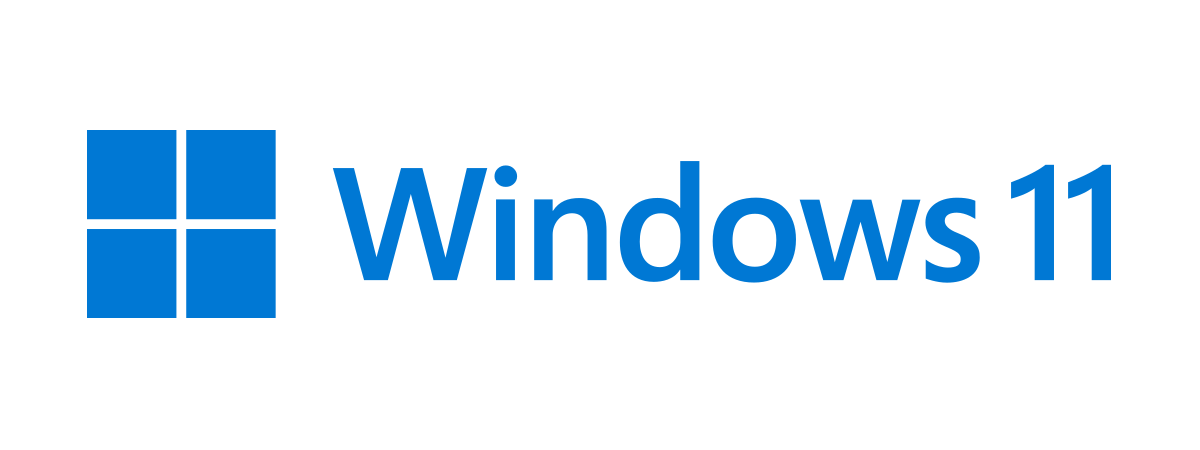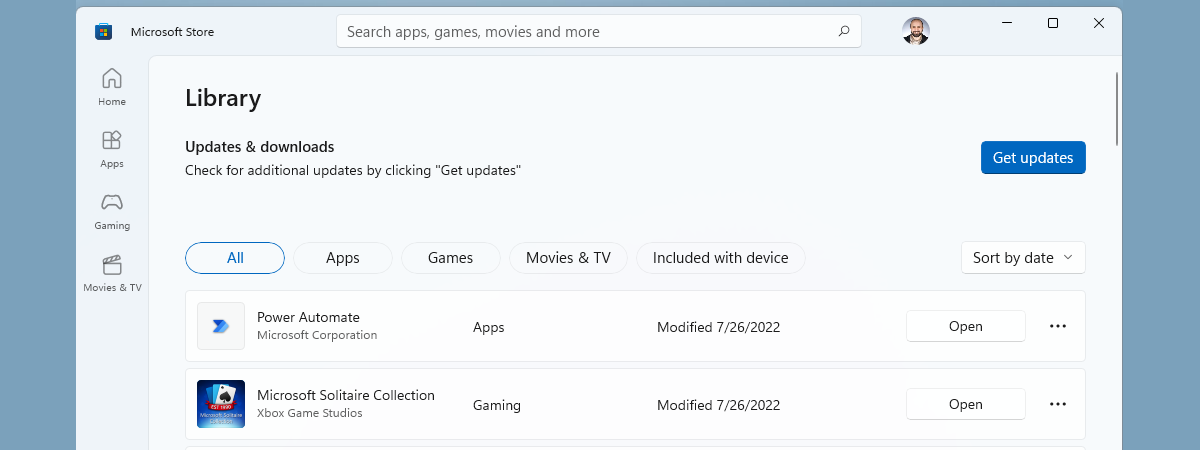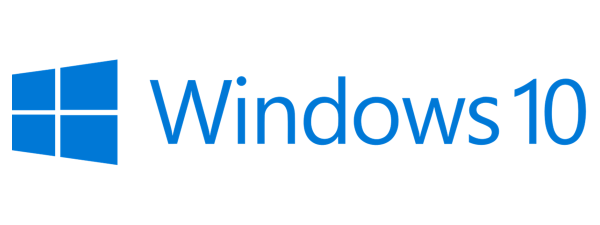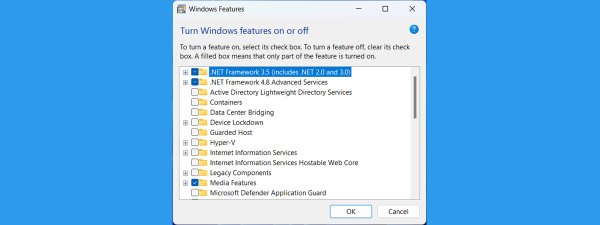
Some of our readers asked us to explain all those optional features that can be added to or removed from your Windows installation. Even though all of them have some description, the information offered by Windows is either too brief or too complex to understand for most people. So we decided to publish this article and walk you through every Windows feature. We also describe what each of them is or does, so you can decide on your own what Windows features should be turned on and which ones should be removed. Let’s get started:
NOTE: For this article, we used Windows 11 Pro Version 21H2 and Windows 10 Pro Version 21H2. If you have another version or edition of Windows, you might get a different number of optional features than the ones listed below.
Optional Features: What are they & What do they do?
We’ll show you all the Optional features (available to install or installed by default) in Windows 11 and Windows 10. If you want to see how to access them, read this guide: How to add or remove optional features from Windows 11 and Windows 10.
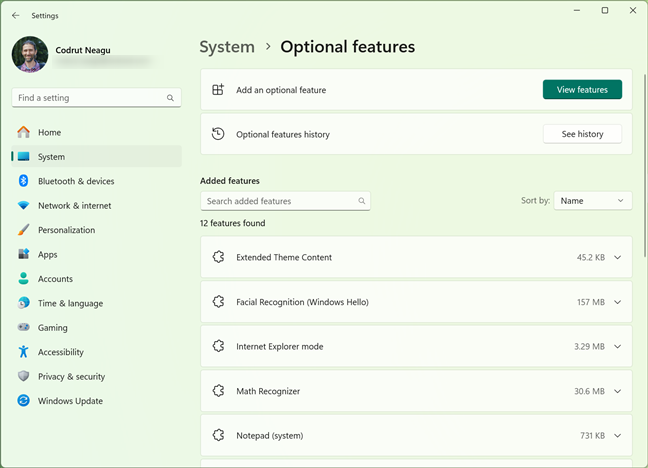
Optional features in Windows 11
In Windows 11 and Windows 10, there’s a long list of Optional features either installed by default or that you can add by yourself. Here’s what they are and what they do:
- EMC and SAC Toolset for Windows 10 - Windows Emergency Management Services (EMS) and Special Administration Console (SAC) Toolset: these tools help you perform remote management and system recovery tasks when the server isn’t available. Though they’re named “for Windows 10”, they’re available in Windows 11 too.
- Graphics Tools - Adds DirectX Graphics Tools support. These tools allow you to perform things like graphics debugging, frame analysis, and GPU usage monitoring in Visual Studio.
- Internet Explorer mode - Enables Internet Explorer mode functionality in Microsoft Edge. Available only in Windows 11.
- IrDA infrared - If you’re using an infrared dongle on your Windows computer, you need to install this optional feature to be able to use it.
- Math Recognizer - Math Input Control and Recognizer. The Math Input Panel is an app that can convert handwritten math into digital text. Here’s additional information about it: How to do math with the Math Input Panel in Windows.
- Microsoft Quick Assist - Allows Microsoft support agents to connect to your device and also lets you share your screen with someone you trust so they can help you.
- MSIX Packaging Tool Driver - Useful for developers, this one enables you to repackage existing desktop applications to the MSIX format.
- Microsoft WebDriver - A tool that allows web developers to perform automated testing of Microsoft Edge and hosts of the EdgeHTML platform.
- Notepad - The classic system Notepad, for editing text files when newer versions of the Notepad app are unavailable. Check these guides for more details about this app: What is Notepad? 9 things you can use it for and How to use Notepad in Windows 11.
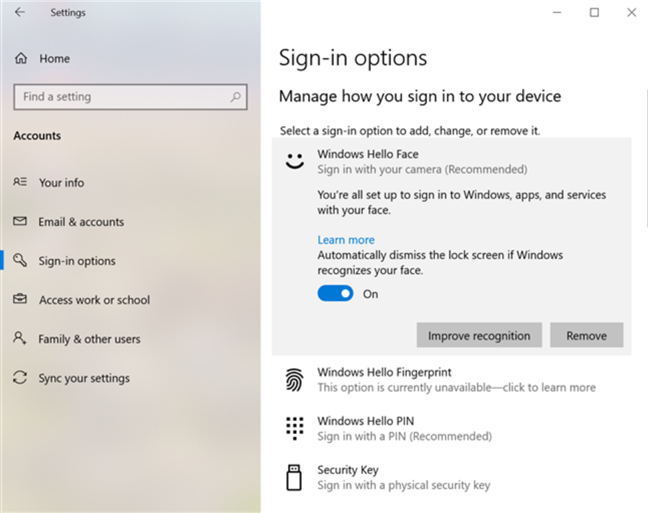
Notepad in Windows 11
- OpenSSH Client - Provides secure (encrypted) key management and access to remote machines.
- OpenSSH Server - Offers secure key management and access from remote machines to your Windows computer.
- RAS Connection Manager Administration Kit (CMAK) - Helps administrators create customized profiles for connecting to remote servers and networks.
- RIP Listener - This service will listen for RIP announcements sent by routers and modify the routing table based on the information gathered. However, the routers your computer communicates with must support the RIPv1 protocol. This feature may be useful on some corporate networks but not for home users.
- Print Management - Enables management of printers, printer drivers, and printer servers. TIP: Here’s how to add a local printer on your Windows computer using a USB cable.
- RSAT Tools - Includes many optional features available to install independently from one another, designed for remote computer management. RSAT (Remote Server Administration Tools) lets administrators manage features, roles, and services on Windows remote computers. The RSAT optional features are Active Directory Certificate Services Tools, Active Directory Domain Services and Lightweight Directory Services Tools, BitLocker Drive Encryption Administration Utilities, DHCP Server Tools, DNS Server Tools, Data Center Bridging LLDP Tools, Failover Clustering Tools, File Services Tools, Group Policy Management Tools, IP Address Management (IPAM) Client, Network Controller Management Tools, Network Load Balancing Tools, PowerShell module for Azure Stack HCI, Remote Access Management Tools, Remote Desktop Services Tools, Server Manager, Shielded VM Tools (only in Windows 10), Storage Migration Service Management Tools, Storage Replica Module for Windows PowerShell, System Insights Module for Windows PowerShell, Volume Activation Tools, Windows Server Update Services Tools.
- Simple Network Management Protocol (SNMP) - A legacy protocol created for administering devices connected to a network. Using this rather old protocol, you can monitor the network activity of old devices like routers, printers, computers, etc. More information about it is available here. This feature is not required unless you are an IT professional in a business network with a rather old setup.
- Steps Recorder - Capture steps with screenshots to save or share. Here’s how to use Steps Recorder to capture steps for Windows 10 troubleshooting.
- Supplemental Fonts - Includes additional fonts for various languages and dialects. Each of the following fonts is available as a distinct optional feature that you can install in Windows: Arabic Script, Bangla Script, Canadian Aboriginal Syllabics, Cherokee, Chinese (Simplified), Chinese (Traditional), Devanagari, Ethiopic, Gujarati, Gurmukhi, Hebrew, Japanese, Kannada, Khmer, Korean, Lao, Malayalam, Odia, Pan-European, Sinhala, Syriac, Tamil, Telugu, Thai.
- TPM Diagnostics - Tool to retrieve diagnostic information about the Trusted Platform Module. Available only in Windows 11.
- Windows Fax and Scan - A (old) faxing and scanning application for Windows.
- Windows Hello Face - Windows Hello Face Software Device. For more information, read How to unlock your PC with your face using Windows Hello Face and How to face unlock Windows 11 with Windows Hello.
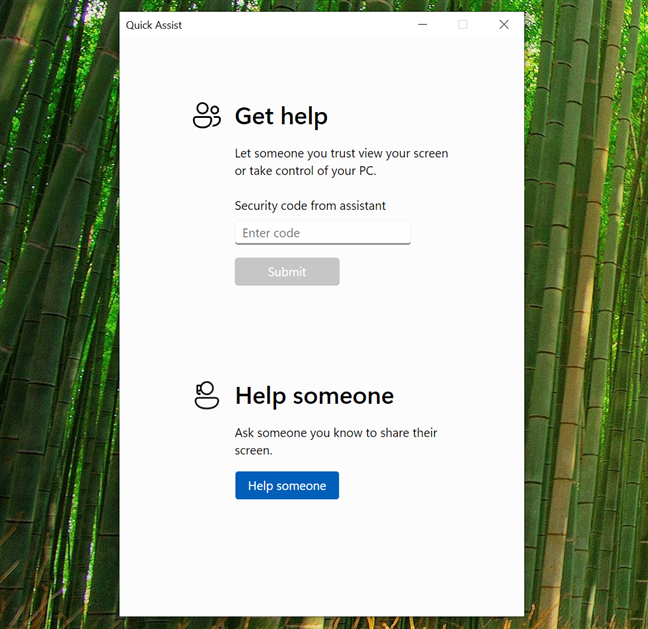
Windows Hello Face
- Windows Media Player - An “oldies but goldies” app that you can use to play audio and video files on your local machine and from the internet. Here’s a good start on how to use it: How to play music in Windows Media Player.
- Windows PowerShell ISE - Windows PowerShell Integrated Scripting Environment (ISE) is a graphical editor for PowerShell scripts with syntax-coloring, tab completion, and visual debugging.
- Windows Storage Management - This enables advanced storage capabilities, allowing you to manage a wide range of storage configurations, from single-disk desktops to external storage arrays.
- Wireless Display - Requires a Miracast-capable Wi-Fi card and allows other devices to wirelessly project to your computer. Here’s how it works: How to use your Windows PC as a wireless display.
- WMI SNMP Provider - Enables WMI clients to consume SNMP information through the CIM model as implemented by WMI. This feature requires Simple Network Management Protocol (SNMP).
- WordPad - Create, open, and edit .rtf, .docx, and .txt files instantly. Here’s How to work with WordPad in Windows.
- XPS Viewer - This allows you to read, copy, print, sign, and set permissions for XPS documents.
Windows Features: What are they & What do they do?
Next, let’s see all the features found in the Windows Features window. But, before listing them all, here’s how to access them: How to add or remove Windows features or components.
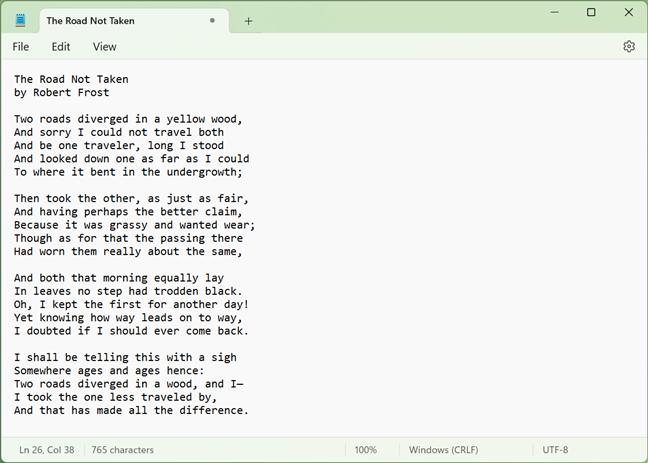
Turn Windows features on or off
After you open the Windows Features window, you see a long list of Windows features that can be added or removed. Let's walk through each of them and see what it does:
- .NET Framework 3.5 (includes.NET 2.0 and 3.0) – a software development framework created by Microsoft. Many desktop programs and games commonly use it. Windows includes, by default, .NET Framework 4.8, which is newer. If you have older programs or games that need this version to run, you might want to install it.
- .NET Framework 4.8 Advanced Services – these advanced services include ASP.NET 4.8 (a server-side web application framework) and WCF Services - they are used to implement and deploy service-oriented architectures and distributed computing services. Does all of this sound like gibberish to you? These services are relevant only to software developers and business environments with complicated infrastructures and services. Casual users don't need to install these services and should keep only the defaults that come with Windows (WCF Services, TCP Port sharing).
- Active Directory Lightweight Directory Services - a basic version of Active Directory Domain Services. The purpose of this feature is to provide only directory services. A situation in which it can be used is when you have applications that need access to a directory service but do not need to access an Active Directory database. This feature can be used even in environments where no Active Directory domains exist. As you can imagine, it is not needed for casual Windows users. It is helpful only to developers and businesses that use applications requiring this feature.
- Containers - includes everything you need to create containers on your Windows machine. These are tools that allow apps to run in their isolated boxes, with no knowledge of anything outside that box. Regular users do not need these services and tools, but everyone curious can read about them here: Containers on Windows.
- Data Center Bridging - a series of standards developed by IEEE (Institute of Electrical and Electronics Engineers) for data centers. They include standards for storage, data networking, inter-process communication, and management traffic that all share the same Ethernet infrastructure.
- Device Lockdown - lets you install and run services and tools that provide a specialized user interface. In common words, it lets you run your Windows device in a kiosk machine, for example.
- Guarded Host - allows administrators to run shielded virtual machines on Hyper-V to secure them and block access to the attacks coming from malware or other malicious threats.
- Hyper-V - a Windows feature that lets you create and run virtual machines. It is similar to other popular software like VirtualBox or VMware. However, Microsoft went to the next level in terms of performance: Hyper-V is faster than other similar technologies, as its processes run at a lower level in the operating system. This means the virtual machines are closer to the physical layer (the actual hardware) and thus operate faster. If you are interested in working with virtual machines, you might want to consider installing this feature. Otherwise, you do not need it.
- Internet Explorer 11 - Microsoft's old internet browser. You should keep it only if you still have to use it. This “feature” is available only in Windows 10, not in Windows 11.
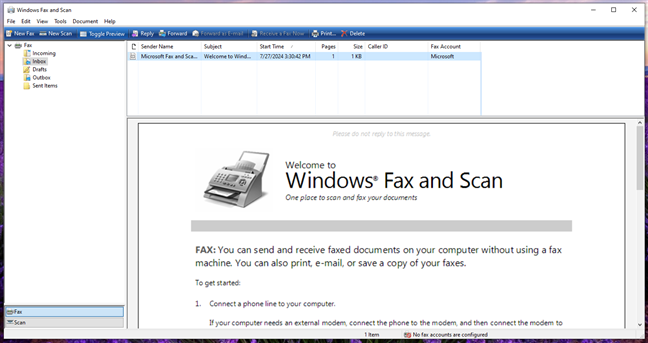
Internet Explorer in Windows 10
- Internet Information Services - this feature is also known as IIS. It allows your Windows computer to act as a web server. This is useful only to software developers and IT professionals. Once you install these services, you can access the IIS Manager from the Start Menu, and you can use any browser to access the sites that you’re hosting. Go to http://localhost in your favorite browser to see an example.
- Internet Information Services Hostable Web Core - another web server feature that is a lighter version of IIS. It includes only the core IIS web engine components, and it requires fewer resources to run. You can use it to host only one website, and it is useful for enabling basic web server capabilities for custom applications or debugging applications. This feature is required only by software developers and IT professionals. Casual users do not need to install it.
- Legacy Components - DirectPlay was a part of the DirectX application programming interface. It used to be a library designed for network communication. Unless you are playing old games developed before 2008 and require this library, you should be OK with removing it.
- Media Features (Windows Media Player) - the default media player bundled with Windows. If you do not use it to play music or videos, you can remove it. Third-party media players are generally a better option. Windows Media Player is also used for streaming multimedia content over the local network.
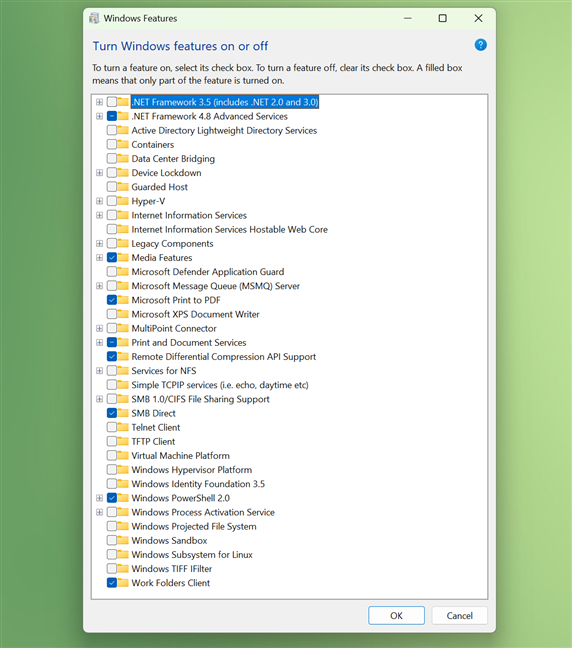
Windows Media Player
- Microsoft Defender Application Guard - offers a secure container for internet browsing. In other words, it lets you isolate untrusted sites: as an administrator, you define what is among trusted websites, cloud resources, and internal networks in your company, and everything not on your list is considered untrusted.
- Microsoft Message Queue (MSMQ) Server - MSMQ is an old service that has only one purpose: to improve communications when working with unreliable networks. This service stores messages in a buffer so whenever a connection drops, it can resend them when the network becomes available again. This feature is useful only for businesses that have applications requiring this service.
- Microsoft Print to PDF - Windows includes a default virtual printer available to all its users, called “Microsoft Print to PDF.” It allows you to save documents as PDF files. If you do not want this feature, you can disable it.
- Microsoft XPS Document Writer - provides support for Microsoft's XPS file format, which is an alternative to Adobe's PDF format. You need this service if you want to be able to print and save XPS files.
- MultiPoint Connector - allows for MultiPoint Manager and Dashboard apps to monitor and manage your Windows device. This is needed only in some corporate networks where such apps are used.
- Print and Document Services - services required by certain (older) printing, faxing, and scanning devices. By default, the Internet Printing Client service is enabled in Windows, allowing you to use HTTP to access web printers. Other services like LPD Print Service and LPR Port Monitor are alternate but deprecated printing technologies, no longer used on a large scale.
- Remote Differential Compression API Support - is a synchronization algorithm that allows fast comparisons between synchronized files and detects the data removed or added from their contents. You can find more information about the RDC algorithm here. This feature is used by a small number of Windows programs and apps, so it is best to keep it enabled.
- Services for NFS - lets you access files that use the NFS protocol (Network File system). If you have and use a NAS (Network Attached Storage), you probably want this feature to be enabled.
- Simple TCP/IP services (i.e., echo, daytime, etc.) - a collection of “oldies but goldies” - command line tools that include character generator, daytime, discard, echo, and quote of the day. You should not need to use them.
- SMB 1.0/CIFS File Sharing Support - this feature enables the sharing of files and printers with computers running older versions of Windows, ranging from Windows NT 4.0 up to Windows XP and Windows Server 2003 R2. The Server Message Block (SMB) protocol may be used by other operating systems like Linux or macOS to communicate with Windows devices. If that is the case in your network, it is safer not to disable it.
- SMB Direct - Allows network adapters to use RDMA (Remote Direct Memory Access) to improve the file sharing process when using SMB 3.x file sharing protocol.
- Telnet Client - a legacy command line client that uses the Telnet network protocol to provide bidirectional text-oriented communication with a Telnet server. Most users will never need to use it. TIP: Here are 5 fun & geeky things you can do on Telnet.
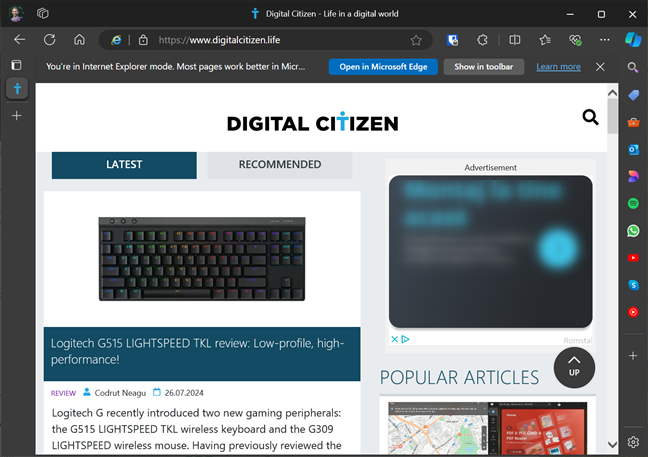
The Telnet Client in Windows
- TFTP Client - a simple command line tool that can be used to transfer files via the Trivial File Transfer Protocol. Most users do not need to use it.
- Virtual Machine Platform - This is part of the native virtualization system offered by Microsoft.
- Windows Hypervisor Platform - an API (Application Programming Interface) used by other third-party virtualization software, such as VirtualBox or Android emulators.
- Windows Identity Foundation 3.5 - a software framework for building identity-aware applications. The .NET Framework 4.8 included in Windows 10 and Windows 11 offers a newer version of this framework. You should install the 3.5 version only if you are using older applications that do not work without it. Most users do not need to install it.
- Windows Powershell 2.0 - a command-line tool that focuses on task automation and configuration management. To gain a better understanding, we recommend reading What is PowerShell and what can you do with it?.
- Windows Process Activation Service - a service for message-based applications and components related to Internet Information Services (IIS). It allows software developers to choose the most appropriate protocol for their needs. This feature is useful only to software developers.
- Windows Projected File System - also known as ProjFS, lets apps create virtual file systems. Unless you are working with code and developing stuff, you do not need this.
- Windows Sandbox - allows you to run a free Windows 11 or Windows 10 virtual machine within Windows, in which you can safely execute anything you wish: potentially malicious email attachments that you have received, apps that are in development or testing, and so on. Windows Sandbox is an excellent feature for anyone who needs a safe, isolated environment that doesn’t affect the PC it’s running on. If you’re interested, here’s how to install Windows Sandbox.
- Windows Subsystem for Linux - lets you install and use the Linux distributions such as Ubuntu, OpenSUSE, Debian, or Kali Linux in Windows. You can read more about how to get it working here: How do I get the Windows Subsystem for Linux?.
- Windows TIFF IFilter - with this feature turned on, Windows can recognize text inside TIFF image files. It is disabled by default, as optical character recognition has a big impact on performance.
- Work Folders Client - allows users to sync a folder and its content from the corporate network to their personal devices. Files created locally will sync back to the file server in the corporate environment.
Did we manage to help you understand the features available for Windows?
Phew… this was a lengthy guide! It took us a lot of time and work to make it. We hope it will prove useful to you and that it has answered your questions related to the different Windows features available. If you are looking for other interesting tutorials, do not hesitate to take a look at our recommendations below.




